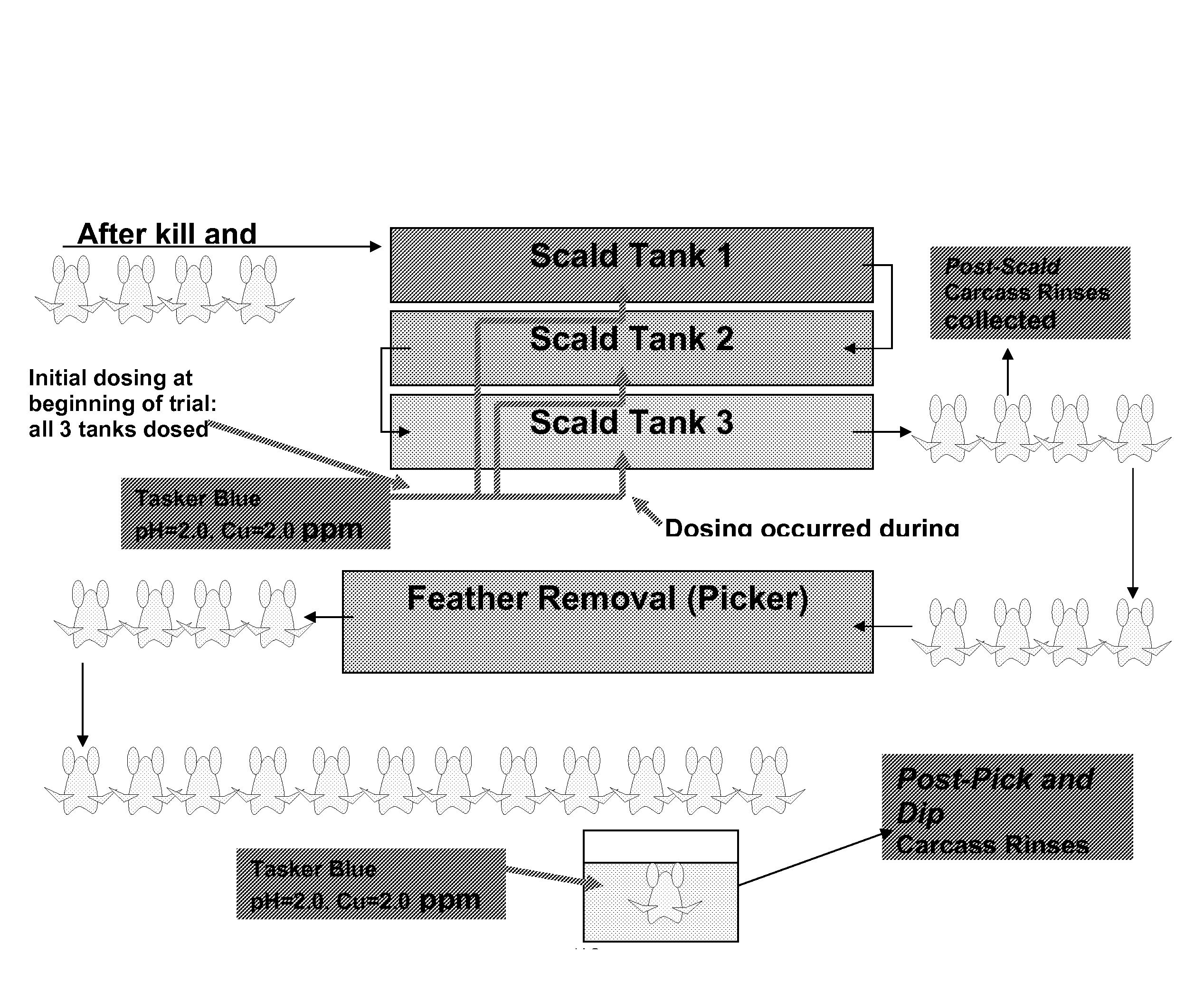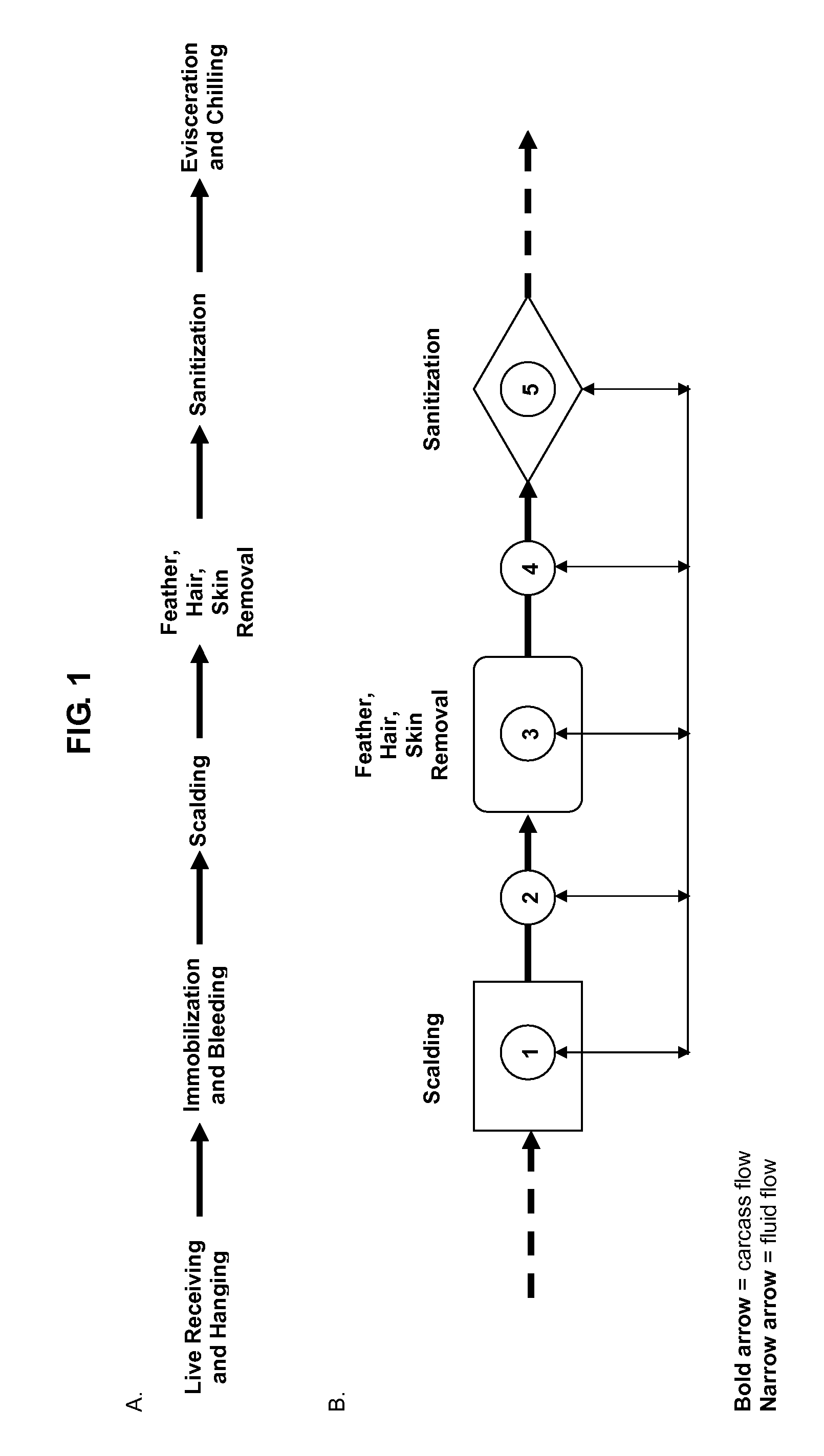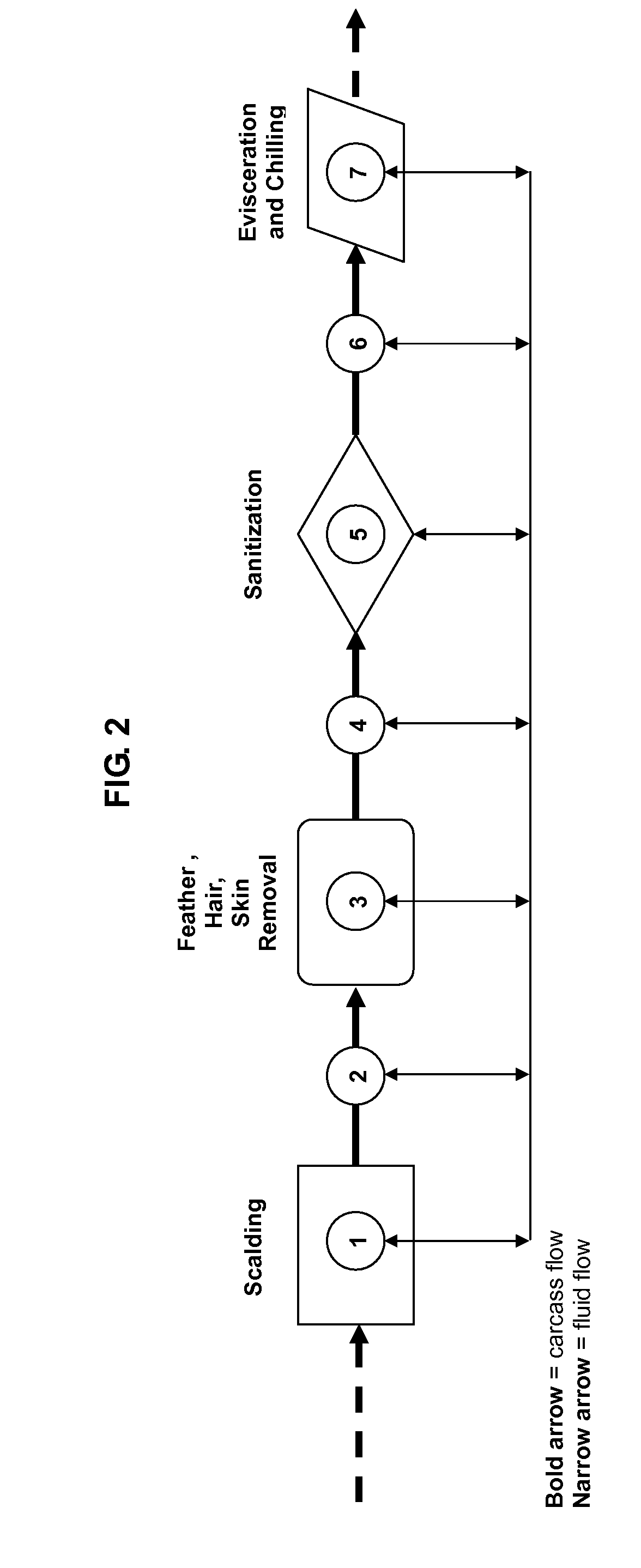Compositions and methods for reducing microbial contamination in meat processing
- Summary
- Abstract
- Description
- Claims
- Application Information
AI Technical Summary
Benefits of technology
Problems solved by technology
Method used
Image
Examples
example 1
[0134]The effect of using a scalder disinfectant was examined in a poultry scalder alone or in combination with a post-pick dip solution as a means of reducing pathogenic and indicator populations of bacteria on chicken carcasses. Sets of carcasses (10 per experimental group) were collected post-scald and post-pick and dip and evaluated for aerobic plate counts, E. coli counts, and Salmonella prevalence over a period of six weeks at a poultry processing plant.
[0135]For the scalder disinfectant treatment groups, all three scalders were initially dosed with pHarlo Blue® 0020 (Tasker) to a target level of 38 ppm (range: 30-60 ppm) with a target level of 0.8 ppm (range: 0.8-2.0 ppm) copper. pH was adjusted to a final pH of 2.0 to 2.2 and recorded. After the initial dose, the third scalder was continually dosed during the process with pHarlo Blue® 0020 to a target level of 38 ppm (range: 30-60 ppm) with a target level of 0.8 ppm (range: 0.8-2.0 ppm copper). The overflow water coming out ...
example 2
[0141]The effect of decreased scalder temperature in combination with the use of a scalder disinfectant on yield was examined.
[0142]Routine problems encountered with lowered scalder temperature include increased Salmonella prevalence and Poor picking and epidermis removal. Salmonella's maximum growth temperature is 113° F. Practitioners in the art generally recommend a minimum of 10° F. above the maximum growth temperature to prevent growth in the scalder. As such, it is routine in the industry to the maintain the scalder at a minimum temperature of 123° F. In a preliminary study where a scalder was maintained at 114° F., Salmonella were observed at a level of 105 (100,000) / ml of scalder water, resulting in every carcass run through the scalder being inoculated with Salmonella during scalding.
[0143]Collection procedures were as described in Example 1, except as otherwise noted. Control scalder temperatures were 132°, 134°, and 136° F. for the first, second, and third scalder tanks, ...
example 3
[0146]The effect of disinfectant added during scalding, spraying, and chilling on Escherichia coli counts and Salmonella prevalence was examined.
[0147]Thirty broiler chicken carcasses were collected prior to scalding in a commercial processing facility and transported to a small-scale poultry processing plant. Collection procedures were as described in Example 1, except as otherwise noted. These carcasses were inoculated with a naladixic acid resistant strain of Salmonella typhimurium (obtained from the Poultry Microbiological Safety Unit at the USDA-Agricultural Research Service's Russell Research Center) and were allowed to attach to the carcasses for 3 hours. Fifteen control carcasses were scalded in commercial scald water, sprayed with tap water, and chilled in tap water for 1 hour as controls. Fifteen test carcasses were scalded in commercial scald water containing Tasker BLUE® at 2 ppm copper, sprayed with a 2 ppm copper solution of Tasker BLUE®, and chilled in a concentration...
PUM
 Login to View More
Login to View More Abstract
Description
Claims
Application Information
 Login to View More
Login to View More - R&D
- Intellectual Property
- Life Sciences
- Materials
- Tech Scout
- Unparalleled Data Quality
- Higher Quality Content
- 60% Fewer Hallucinations
Browse by: Latest US Patents, China's latest patents, Technical Efficacy Thesaurus, Application Domain, Technology Topic, Popular Technical Reports.
© 2025 PatSnap. All rights reserved.Legal|Privacy policy|Modern Slavery Act Transparency Statement|Sitemap|About US| Contact US: help@patsnap.com



